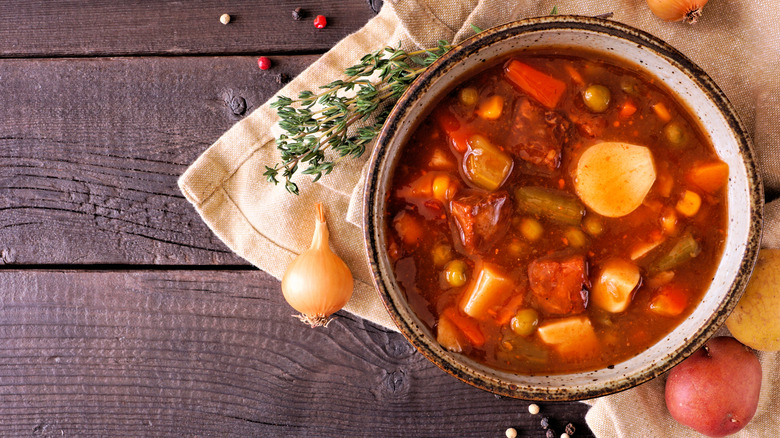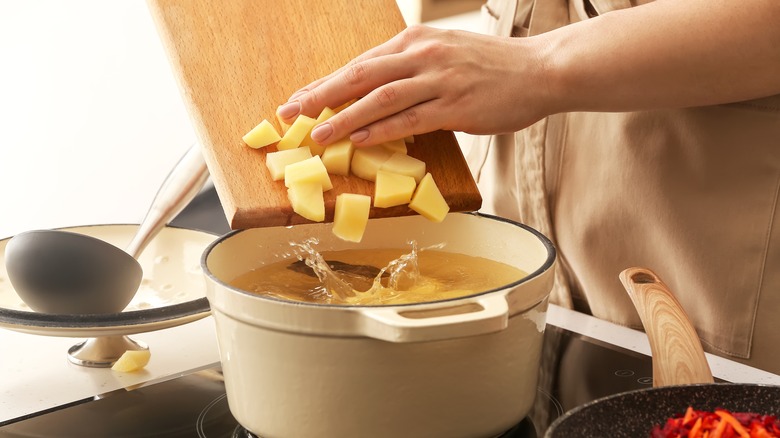It's Essential To Consider Individual Cook Times For Vegetable-Heavy Soups
When the weather turns cold, thoughts naturally drift to coziness. We think of thick sweaters, roaring wood fires, mugs of warm beverages, and watching snow fall outside. And here in the U.S., we barely scratch the surface of the concept. In the notoriously cold climates of Northern Europe and Scandinavia, many cultures have a more well-rounded view of coziness. As CNBC explains, the Danish treasure hygge, which encompasses our view of comfortable coziness but also contentment and enjoying time with family and friends. The Danes should know as the United Nations has found them to be one of the happiest populations in the world.
One thing that often underpins and engenders feelings of hygge and coziness is food. Gathering inside and craving warmth naturally makes us gravitate to the kitchen as it emanates heat and pleasant scents. While spring and summer speak to our desire for the bounty of the garden and bright, fresh, crisp flavors, fall and winter almost demand deep, developed flavors, such as those found in savory braises, stews, and soups.
Soup is a fantastic and relatively easy way to feel cozy fast. Further, it is a forgiving form of cooking, generally only dirtying one pot, that can accommodate a plethora of ingredients. As such, it is a simple and effective way to get needed vegetables in one's diet. But when cooking soups and stews that pack in the plants, care must be taken to ensure every item cooks correctly.
Build your soup in stages
Similar to many recipes, soups often call for flavors to be built up from a foundation. Often that foundation is mirepoix, a French culinary term for carrots, celery, and onion. As Chatelaine points out, this triad is often called aromatics, as they add not just flavor, but powerful aromas to the dishes to which they are a key component. Most soup recipes call for sweating aromatics at the beginning of the process. This achieves a few ends as it unlocks those aromas while also softening the flavors, especially of the onion and garlic. While mirepoix might not be in every soup recipe, generally some aromatics will be, such as the "holy trinity" of Cajun cuisine, which swaps out bell pepper for carrot (via AllRecipes.)
While aromatic blends like mirepoix are often the first thing to go into a soup and they certainly are vegetables, it is important to consider the vegetables that will be featured in a soup. Much like a shrimp or lean chicken breast will cook faster than cubes of beef chuck, certain vegetables need a little more time simmering in broth to become appropriately tender, says Chatelaine. Hearty squashes like butternut and root vegetable — think parsnip, turnip, rutabaga, and potato — should be added at an earlier stage. More tender items, like peas, asparagus, green beans, and leafy greens, should be left to finish at the end so that all ingredients reach their optimal cooked state at the same time.

